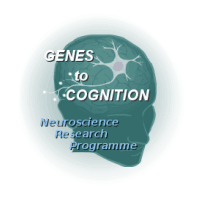G2C::Press Releases
Comparative study of human and mouse postsynaptic proteomes
In a paper published in PLOS ONE, Edinburgh University and the Genes to Cognition Programme, with collaborators at l'Hospital de la Santa Creu i Sant Pau, Barcelona and The Wellcome Trust Sanger Institute, report the first direct comparison of the proteomes of mouse and human cortical postsynaptic densities (PSDs) using proteomic mass spectroscopy.
By making direct comparison of protein components from human and mouse excitatory synapses, such as the PSD, we wished to determine the applicability of mice as models of human brain disease, and to understand the evolution of the mammalian brain.
We found a large compositional overlap between the species, more than 70% of human PSD proteins were also observed in the mouse PSD. Quantitative analysis of the PSD components indicates a broadly similar profile of abundance in both species, but also reveal there is higher abundance variation between than within species.
Significant inter-species abundance differences exist in some families of key PSD proteins including glutamatergic neurotransmitter receptors and adaptor proteins. Furthermore, we have identified a closely interacting set of molecules enriched in the human PSD that could be involved in dendrite and spine structural plasticity.
The proteomic datasets appearing in the paper, will give scientists new ways to study diseases of the brain, and develop new therapies.
